

Future - Would a supervolcano eruption wipe us out? In the Bay of Naples, Europe's most notorious giant is showing signs of reawakening from its long slumber.
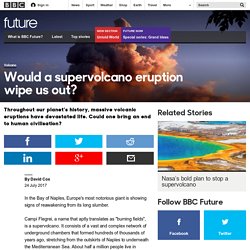
Campi Flegrei, a name that aptly translates as "burning fields", is a supervolcano. It consists of a vast and complex network of underground chambers that formed hundreds of thousands of years ago, stretching from the outskirts of Naples to underneath the Mediterranean Sea. About half a million people live in Campi Flegrei's seven-mile-long caldera, which was formed by vast eruptions 200,000, 39,000, 35,000 and 12,000 years ago. The past 500 years have been fairly peaceful ones for Campi Flegrei. Italian Supervolcano Is Far Closer To Erupting Than Previously Thought. Heads up, ladies and gentlemen – the Phlegraean Fields supervolcano, known in its native Italy as Campi Flegrei, is potentially on the edge of an eruption.
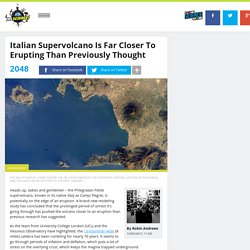
A brand new modeling study has concluded that the prolonged period of unrest it's going through has pushed the volcano closer to an eruption than previous research has suggested. As the team from University College London (UCL) and the Vesuvius Observatory have highlighted, the 13-kilometer-wide (8 miles) caldera has been rumbling for nearly 70 years. It seems to go through periods of inflation and deflation, which puts a lot of stress on the overlying crust, which keeps the magma trapped underground. It was initially thought that the energy used to stretch the crust in this way was lost during each deflation period, but, according to the team’s computer models, this isn’t true – it just accumulates over time, without really dissipating. Severokorejský supervulkán Pektusan se probouzí k životu. Výbuch by mohl ovlivnit globální klima. Severokorejský supervulkán Pektusan se probouzí k životu.
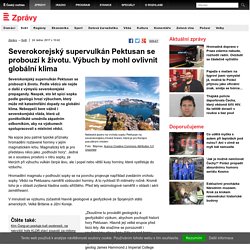
Podle vědců ale nejde o další z výmyslů severokorejské propagandy. What Would Happen If You Dropped A Nuclear Bomb Into A Volcano? A volcano is a lava-filled boil on the surface of the Earth, just waiting to build up enough pressure to spew out ash and lava.
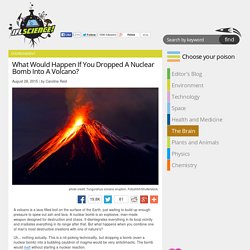
A nuclear bomb is an explosive, man-made weapon designed for destruction and chaos. It disintegrates everything in its local vicinity and irradiates everything in its range after that. Útok na USA začne u sopky v Yellowstonu, říká ruský generál. Ruský vojenský analytik tvrdí, že jeho země se musí bránit, protože NATO se posunuje k jejím hranicím.
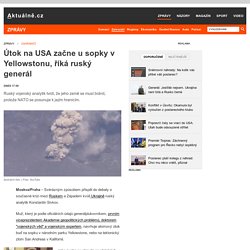
Moskva/Praha – Svérázným způsobem přispěl do debaty o současné krizi mezi Ruskem a Západem kvůli Ukrajině ruský analytik Konstantin Sivkov. Muž, který je podle oficiálních údajů generálplukovníkem, prvním viceprezidentem Akademie geopolitických problémů, doktorem "vojenských věd" a vojenským expertem, navrhuje atomový útok buď na sopku v národním parku Yellowstone, nebo na tektonický zlom San Andreas v Kalifornii.
Jeho úvaha se objevila na stránkách časopisu Vojensko-průmyslový kurýr pod titulkem Jaderný specnaz. Ядерный спецназ. Асимметричное мегаоружие может появиться у России уже до 2020–2025 годов.

Оно исключит всякую угрозу крупномасштабной войны против России, даже в условиях абсолютного превосходства противника в традиционных системах поражения. Против России развертывается новая холодная война. Laacher See: The caldera in the middle of Europe. We’ve been discussing calderas recently on Eruptions (I wonder why) and the Laacher See in Germany came up.
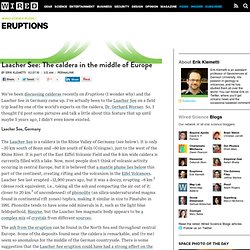
I’ve actually been to the Laacher See on a field trip lead by one of the world’s experts on the caldera, Dr. Gerhard Worner. So, I thought I’d post some pictures and talk a little about this feature that up until maybe 5 years ago, I didn’t even know existed. 1 s2 0 S0031018208005464 main. Fearmongering Gets Started in 2012: Laacher See is Not "Ready to Blow" A quick post today about a tremendously terrible “article” in the Daily Mail this morning.
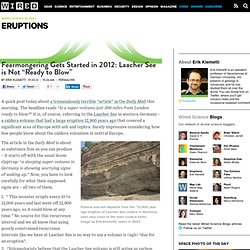
The headline reads “Is a super-volcano just 390 miles from London ready to blow?” It is, of course, referring to the Laacher See in western Germany – a caldera volcano that had a large eruption 12,900 years ago that covered a significant area of Europe with ash and tephra. Surely impressive considering how few people know about the caldera volcanism in central Europe. Pumice and ash deposits from the ~12,900 year ago eruption of Laacher See caldera in Germany, seen very close to the main caldera vents. Toba catastrophe theory. The Toba supereruption was a supervolcanic eruption that occurred some time between 69,000 and 77,000 years ago at the site of present-day Lake Toba (Sumatra, Indonesia).

It is one of the Earth's largest known eruptions. The Toba catastrophe hypothesis holds that this event caused a global volcanic winter of 6–10 years and possibly a 1,000-year-long cooling episode. The Toba event is the most closely studied super-eruption.[2][3][4] In 1993, science journalist Ann Gibbons suggested a link between the eruption and a bottleneck in human evolution, and Michael R. Rampino of New York University and Stephen Self of the University of Hawaii at Manoa gave support to the idea.
In 1998, the bottleneck theory was further developed by Stanley H. Supereruption[edit] The Toba eruption took place in Indonesia and deposited an ash layer approximately 15 centimetres thick over the whole of South Asia. Volcanic winter and cooling[edit] Genetic bottleneck theory[edit] Genetic bottlenecks in humans[edit] Supervulkán. Srovnání erupcí klasických vulkánů se supervulkány VEI7 a VEI8 Supervulkán je sopka schopná sopečnou erupcí produkovat ejekta větší než 1 tisíc kubických kilometrů.
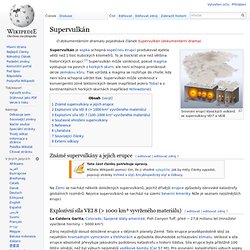
To je tisíckrát více než většina historických erupcí.[1] Supervulkán může vzniknout, pokud magma vystupuje na povrch z horkých skvrn, ale není schopno proniknout skrze zemskou kůru. Volcano Hazards Program - Yellowstone FAQs: Questions About Supervolcanoes. What is a supervolcano? Comparison of eruption sizes using the volume of magma erupted from several volcanoes. The term "supervolcano" implies a volcanic center that has had an eruption of magnitude 8 on the Volcano Explosivity Index (VEI), meaning the measured deposits for that eruption is greater than 1,000 cubic kilometers (240 cubic miles).
List of Super Volcanoes of the World. Risk of supervolcano eruption big enough to 'affect the world' far greater than thought, scientists say - Science - News. An analysis of the molten rock within the dormant supervolcano beneath Yellowstone National Park in the United States has revealed that an eruption is possible without any external trigger, scientists said. Scientists previously believed many supervolcanic eruptions needed earthquakes to break open the Earth’s crust so magma could escape. What Will Happen if Yellowstone Supervolcano Erupts? US Geological Survey uses computer simulation to show what will happen if Yellowstone erupts(v1ctory_1s_m1ne/Flickr) How would the US be affected if the supervolcano at Yellowstone National Park erupted?
That's the question scientists have been considering in the journal Geochemistry, Geophysics, Geosystems. Experts from the US Geological Survey said while the chance of an eruption remains "very low", it has developed a computer model to simulate the distribution of volcanic ash following a "hypothetical large explosive eruption at Yellowstone". It said people frequently ask what would happen if Yellowstone erupted and results concluded an event of this kind would leave most of the US covered in a blanket of ash, with some areas buried in over a metre of the dust.
The report, Modeling ash fall distribution from a Yellowstone supereruption, provided simulations of an eruption that lasted three days, one week and one month. Will the Yellowstone Volcano Erupt in Our Lifetime? (+Map) The possibility of the volcano under Yellowstone National Park erupting is a hot topic right now, especially with the recent 4.8 magnitude earthquake and videos circulating that allegedly show animals fleeing the park. The volcano under the park is so large and has the potential to produce such a massive eruption that it’s often referred to as a supervolcano. Earthquakes are common in the area, with between 1,000 and 2,000 quakes in the area per year due to the volcanic and tectonic nature of the region.
Rising Number of Earthquakes But the 4.8 quake was the largest recorded since February 1980, and is part of an uplift of earthquake activity recently, caused by the upward movement of molten rock beneath the Earth’s crust, according to the U.S. Geological Service. Modeling ash fall distribution from a Yellowstone supereruption - Mastin - 2014 - Geochemistry, Geophysics, Geosystems. Abstract We used the volcanic ash transport and dispersion model Ash3d to estimate the distribution of ashfall that would result from a modern-day Plinian supereruption at Yellowstone volcano. The simulations required modifying Ash3d to consider growth of a continent-scale umbrella cloud and its interaction with ambient wind fields. We simulated eruptions lasting 3 days, 1 week, and 1 month, each producing 330 km3 of volcanic ash, dense-rock equivalent (DRE).